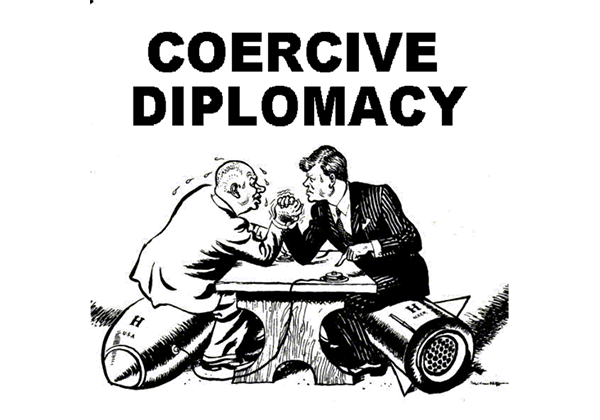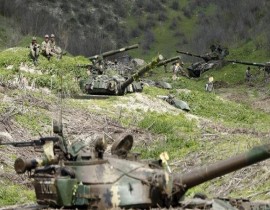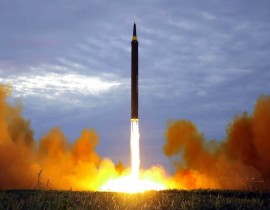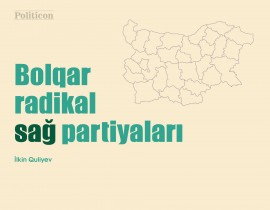Politicon.co
What is coercive diplomacy?

“In a system of states, the use of force generally discriminates between peace and war. Yet, international politics often takes place in a gray region involving no-peace and no-war, wherein the threat of violence – more than its mere application – is the critical variable for and understanding of interstate relations and crises” (Sperandei, 2006). The unique character of this variable makes it both a part of diplomacy and the strategy at the same time, the reason why one cannot simply distinguish notions of coercive diplomacy from strategy of coercion. This essay explores the character of coercive diplomacy, why it does not totally belong to neither diplomacy, nor the use of force. What are the forms of coercive diplomacy? What are the forms of the use of force within its boundaries? What role does power play in terms of coercion? This essay, firstly, deals with the differences between coercive diplomacy and the notion of brute force. Second part concerns with the two types of coercion, namely deterrence and compellence. Third part considers two types of use of power not extending over the limits of coercive diplomacy. It is worth to mention in advance, that although economic sanctions are considered a part of coercive diplomacy, this essay strictly focuses on use of military force, by also putting pressure on compellence rather than deterrence, due to its relative modernity.
According to Daniel Byman and Matthew Waxman (2002), coercion is ‘the use of threatened force, and at times the limited use of actual force to back up the threat, to induce an adversary to change its behavior’. In order to relevantly understand the concept of coercion, Thomas Schelling proposes another term: “brute force”, which implies simply getting what one wants by violence without trying to convince the adversary. Coercion however could be understood as achieving the adversary to act relevantly with one’s demands without applying brute force, while adversary will still retain its capabilities to resist. Nevertheless, the limited use of actual force, is also a part of coercive strategy: indeed it may ‘form a key component of a coercion strategy if its purpose is to enhance credibility or demonstrate the costs that continued defiance will bring’. We can illustrate the distinctiveness of coercion from brute force with examples below: In 1994, the United States achieved to coerce the military regime in Haiti to give up, by threatening military invasion, but applying no actual force before reaching their aims, which is the pure case of coercion, whereas the Israeli bombing of Iraq’s nuclear reactor at Osiraq (company’s name) in 1981 is an example of the brute force, as by applying it Israel did not expect the adversary to change its policy. (Horowitz and Reiter, 2001) However, not all scholars agree on a neat distinction between these two concepts. As Byman and Waxman (2002) put it, ‘distinguishing brute force from coercion is similar to the debate over what constitutes pornography or art: coercion is often in the eye of the beholder”.
Once defined and distinguished from brute force, coercion strategies can be divided into two subcategories in terms of the objective, namely deterrence and compellence. Deterrence involves dissuading the adversary from initiating an undesirable act, while compellence implies demanding the opposite side to undertake a particular action with the threat of the use of force. As Schelling explains the difference as “the threat that compels rather than deters, often requires that the punishment be administered until the other acts, rather than if he acts”. (Bratton, 2005) Although these concepts have some common characteristics as dependence on risks, threats and choices, they differ in different aspects. Deterrence, having had its “golden age” as a result of increasingly destructive character of nuclear weapons and of the beginning of Cold War (Sperandei, 2006), involves sending clear messages what the coercer considers undesirable and then passively looking for the choice of the adversary, and transfers to the use of force only when the opposite side makes the forbidden move. Compellence, however, which gained actuality over classical deterrence by the establishment of monopolar system after the end of the Cold War, where the US no longer had any equal by force rival state, implies initiating an act by the coercer himself in order to force the adversary either to act or stop its action, and stops only when the adversary complies.
Deterrence has no time limit, while compellence requires a clear deadline. In fact, the threat without time limits, in case of compellence, becomes irrelevant to serve the objectives of the coercer. Deterrence, in turn, is divided by Patrick Morgan into general and immediate deterrence. General deterrence deals with preventing an action, no matter whether it is planned or not, while immediate deterrence focuses on concrete events. For instance, as one of the most successful general deterrence measures of the US we can emphasize the foundation of the North Atlantic Treaty Organization.
Deterrent threats are usually clearer, as they aim at preserving the status quo, while compellent threats are less self-limiting and more concentrated on compliance of the adversary, rather than regaining status quo. Compellence therefore seems to be more difficult than deterrence.
Consequently, coercion, being associated with the threat of punishment, implies also inflicting some pain to the adversary. By observing in which ways these punishments are applied to adversaries, we can differentiate between two types of strategy: denial and punishment. If the coercer intends to attack the civilian-industrial assets of the population of the opposite side, hoping that suffering of people will put enormous pressure on the government, then he is undertaking the punishment strategy. By the way, the similar logic is characteristic for the application of economic sanctions. On the other hand, if the coercer aims at military capabilities of the rival, its military production industry, or supply lines, then this type of counterforce strategy is called denial strategy.
Three types of missions can be undertaken in terms of denial strategy. First, air power can be used to directly attack adversary’s military forces and degrade them, usually in coordination with ground forces (the fact which indicates an important difference between implementation of punishment and denial strategies). Second, the coercer may seek to prevent the import of strategic supplies to the defender, what we can call strategic interdiction. And the third choice concerns operational interdiction, dealing with preventing the target from resupplying battlefield forces. Clarifying ways of denial strategy, it becomes quite close to war fighting, making “the distinction between coercion by denial and the pursuit of military victory more ambiguous”. The difference is: “War fighting aims at imposing control, whereas denial threatens to impose control. Yet if denial is pursued to the bitter end, it will result in control. However, as Gareth Porter (2007) puts it, by recalling Vietnam precedent, when ‘Lyndon Johnson pushing the limits of coercion actually involved in unnecessary war’, it is vital to acknowledge the limits of coercion.
Thus we just cannot deny the importance of the air power while considering denial and punishment strategies, especially if we talk about post-cold war era, as air power was the vital part of the most significant military operations of this period. According to Michael Horowitz and Dan Reiter, rising sensitivity of democratizing (democratic-?) societies to casualties, and the least possibility of air power campaigns to take many casualties are the main factors causing an increase in the significance of the air warfare. An important distinction has to be made here, considering whether air power is used in terms of punishment or denial strategy. Robert Pape, in his different articles, compares the notions as punishment versus denial strategies, precision weaponry versus “hammer and anvil” operations, and comes up with crucial implications. Firstly, by conducting empirical facts considering the 1990s, Pape (2004) emphasizes that no matter how precise aircrafts can be, the only use of air warfare just cannot be as effective as “hammer and anvil” - the combination of air and land forces in coercing the adversary. Secondly, by analyzing all cases of air power coercion from 1917 to 1991, he claims that punishment strategies are more likely to fail, while denial is the best strategy to achieve success. The study of the Gulf War by Murray (1998) supports this conclusion, that ultimately the air attacks on Iraqi forces in the Gulf caused Saddam to pull his forces back to Baghdad (Horowitz and Reiter, 2001).
Generally, no one denies the preponderance of denial strategy over punishment strategy. But why do we keep discussing punishment strategies? The answer is all about the costs of enforcement. In fact, cost-benefit analysis is an important part of studies on coercion. From the perspective of the adversary, if resistance costs (comprising the costs of preventing the threat and the pain imposed by coercer’s sanctions) are perceived as more than the compliance costs, it is more possible for the adversary to comply. But if choosing to resist and failing, after the denial strategy of the coercer achieves, the target faces both resistance and compliance costs together. The punishment strategy, however, implies that the target still retains options and chances not to bear compliance costs. This is why denial strategy is more effective than punishment. But denial also requires more enforcement costs for the coercer, which can especially be increased by target’s ‘counter-coercion measures’, by strengthening defense, or military escalation, for instance by overwhelming the gains of control. America’s strategy in Vietnam is a case in point (Security Studies: An Introduction, 2008).
To conclude, this essay attempts to define the character of coercive diplomacy in this essay, with especially stressing on the part concerning the use of force within boundaries of this notion. The first part suggests that brute force and coercive diplomacy are different notions. But further analysis illustrates how pushing the limits of coercion can end up in war. Therefore, one of the problems that can be extracted from this essay, is about how policymakers can vividly distinguish these two notions during decision-making process. Second part illustrates the differences between two types of coercion measures. The problem, however is that there is no common consensus on whether these concepts should be distinguished or not. For David Baldwin, for instance, these concepts can ‘semantically be interpreted in the same way’ (Byman and Waxman, 2002). The third part of the essay defines the forms of use of force against adversaries, implying that some kind of a rational cost-benefit analysis indeed influences decision-making process. But does that mean that the adversary’s moves can really be predicted, or are there just too many factors to undermine (?) this prediction? And what about irrational actors? Despite the strictly descriptive character of this essay that merely attempts explain what coercive diplomacy or strategy of coercion is, dozens of these kinds of questions can be derived from the content, what indicates the range of problems and questions that has yet to be dealt with concerning this topic.
Reference list:
• Bratton C.P., 2005. When Is Coercion Successful? Washington D.C., Naval War College Review, Vol. 58, No. 3.
• Byman D., Waxman M., 2002. The Dynamics of Coercion: American Foreign Policy and the Limits of Military Might. Cambridge University Press.
• Horowitz M., Reiter D., 2001. When Does Aerial Bombing Work?: Quantitative Empirical Tests, 1917-1999. The Journal of Conflict Resolution, Vol. 45, No. 2, p. 147-173.
• Pape A.R., 2004. The True Worth of Air Power. Foreign Affairs, Volume 83, No. 2.
• Porter G., 2007. Coercive Diplomacy and War: The Vietnam Precedent. Huffington Post.
• Schaub G., 2004. Deterrence, Compellence, and Prospect Theory. Political Psychology, Vol. 25, No. 3, Special Issue (Part Two): Prospect Theory, p. 389-411.
• Security Studies: An Introduction. 2008. Edited by Paul D. Williams. Taylor & Francis Group, Routledge.
• Sperandei M., 2006. Bridging Deterrence and Compellence: An Alternative Approach to the Study of Coercive Diplomacy. Cornell University, International Studies Review 8, p. 253-280.
![]()








jpg-1599133320.jpg)

